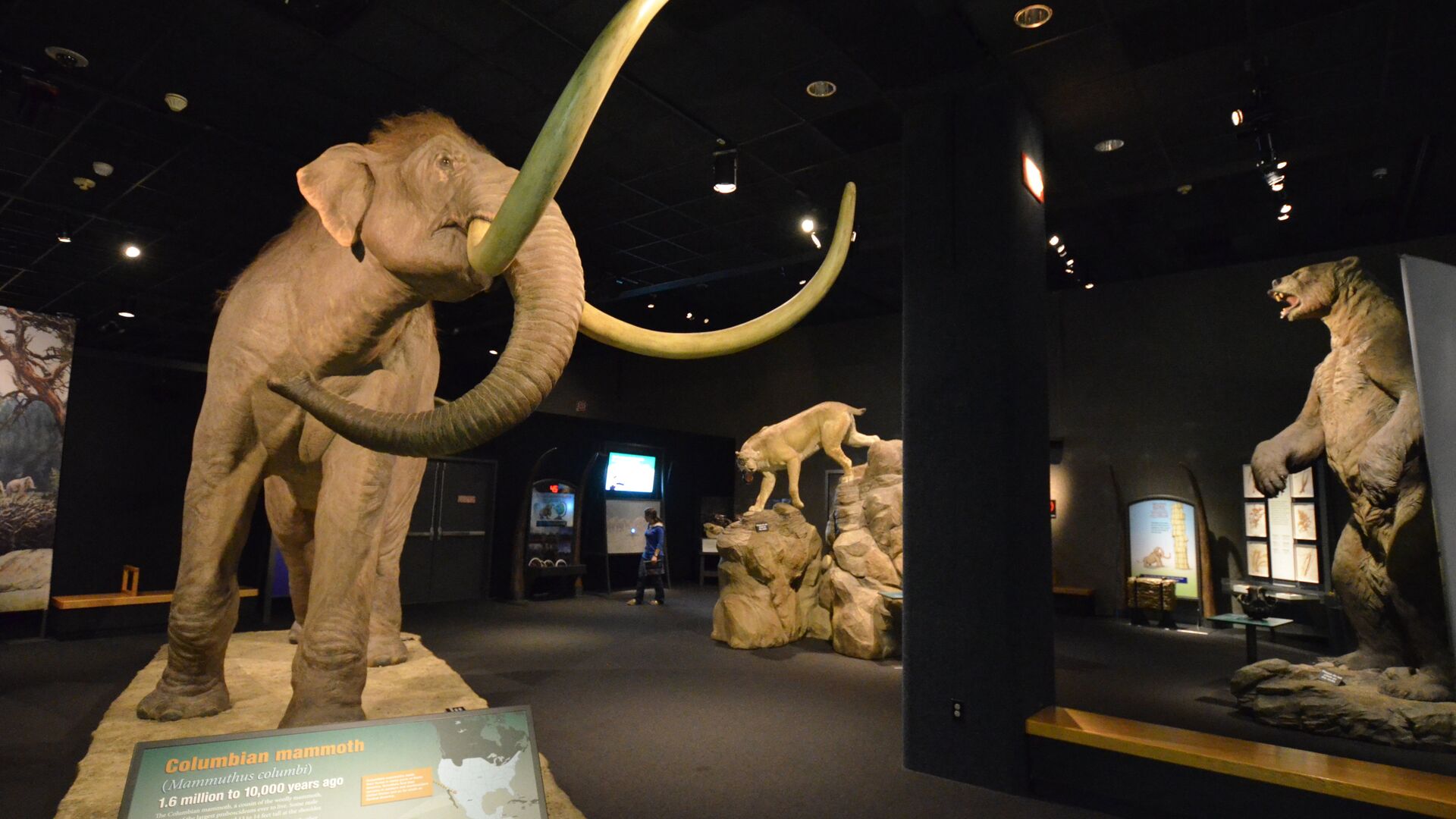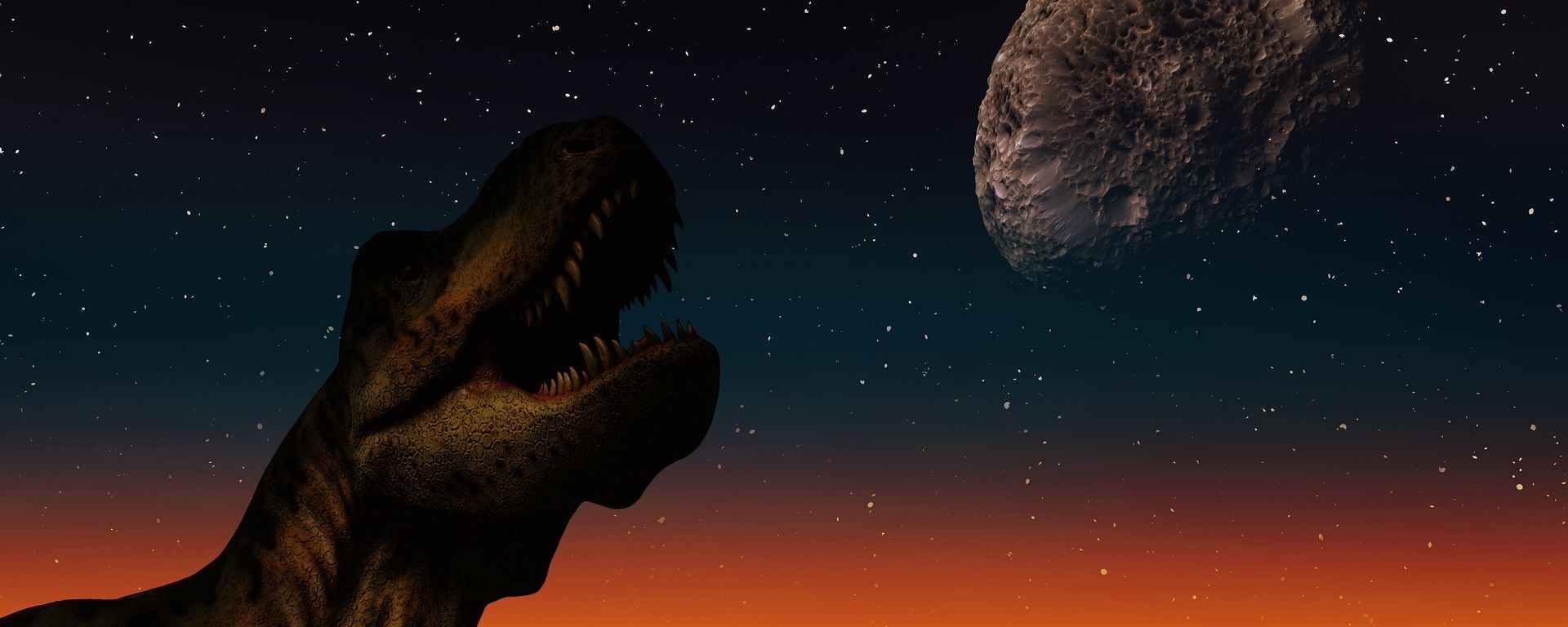https://sputnikglobe.com/20220615/male-mastodon-fossil-reveals-cause-of-death-as-well-as-migration-pattern--1096321598.html
Male Mastodon Fossil Reveals Cause of Death as Well as Migration Pattern
Male Mastodon Fossil Reveals Cause of Death as Well as Migration Pattern
Sputnik International
A mastodon fossil, first found on a farm in 1998 by Kent and Janne Buesching, while mining for peat in their backyard near Fort Wayne, Indiana, referred to by... 15.06.2022, Sputnik International
2022-06-15T04:10+0000
2022-06-15T04:10+0000
2022-08-06T13:35+0000
ice age
fossil
science & tech
https://cdn1.img.sputnikglobe.com/img/102665/31/1026653112_0:246:4928:3018_1920x0_80_0_0_2d3734112503a24ade7a21b6d7f01b44.jpg
Scientists at the University of Michigan have been studying the fossil of a male mastodon that died 13,200 years ago in what is now recognized as northeast Indiana, about 2,200 years before the species went extinct. Mastodons are the prehistoric relatives of the elephants, which are the largest living land animals today.The Buesching mastodon’s fossil has allowed scientists to gain new insight into how the species may have mated and migrated during their time on Earth. The species went extinct about 11,000 years ago and lived, on average, between 60 to 80 years old, depending on the health of their teeth.These giant creatures stood 8 to 10 feet tall, weighed 8,000 to 12,000 lbs, were shorter and stockier than their mammoth relatives and had straighter tusks with molars that have pointed cones made for eating leaves, twigs, and woody plants, a similar diet to today’s deer.The Buesching mastodon was 9 feet tall and 25 feet long and weighed 8 tonnes. In studying the beast’s skeleton since 2006, researchers found a large puncture on the right side of the mastodon’s skull.The ancient creature known as the Buesching mastodon was killed at the early age of 34, about 100 miles from his primary territory. Researchers believe the Buesching mastodon came into contact with another male and was killed when his skull was injured by the tusk tip of the rival male, according to a new study published on Monday in the Proceedings of the National Academy of Sciences.The location where the fossil was discovered once served as a summer mating ground for mastodons, leaving researchers to believe the attack was most likely a grisly duel during the animal’s mating season.The study’s authors found that the Buesching mastodon annually migrated north of his primary territory during the winter months in the last three years of his life.“Using new modeling techniques and a powerful geochemical toolkit, we’ve been able to show that large male mastodons like Buesching migrated every year to the mating grounds,” Miller added.Co-author Daniel Fisher said he was able to study the center of the mastodon’s right tusk like a tree ring and make an educated guess as to how the Buesching mastodon lived. First he stayed in his territory with a female-dominant herd, then as he became older he separated from the herd— which males of this species had to do— and trekked for about 20 miles every month on a solitary route, similar to how today’s elephants live.Mastodons are district from woolly mammoths, though both look like furry elephants. Mastodons roamed North and Central America about 27 million to 30 million years ago, while woolly mammoths appeared in Africa about 5.1 million years ago.
https://sputnikglobe.com/20220408/incredible-fossil-find-dates-to-the-day-the-dinosaurs-died--1094575492.html
Sputnik International
feedback@sputniknews.com
+74956456601
MIA „Rossiya Segodnya“
2022
News
en_EN
Sputnik International
feedback@sputniknews.com
+74956456601
MIA „Rossiya Segodnya“
Sputnik International
feedback@sputniknews.com
+74956456601
MIA „Rossiya Segodnya“
ice age, fossil, science & tech
ice age, fossil, science & tech
Male Mastodon Fossil Reveals Cause of Death as Well as Migration Pattern
04:10 GMT 15.06.2022 (Updated: 13:35 GMT 06.08.2022) A mastodon fossil, first found on a farm in 1998 by Kent and Janne Buesching, while mining for peat in their backyard near Fort Wayne, Indiana, referred to by researchers as the Buesching mastodon has revealed intimate details of the creature's life.
Scientists at the
University of Michigan have been studying the fossil of a male mastodon that died 13,200 years ago in what is now recognized as northeast Indiana, about 2,200 years before the species went extinct. Mastodons are the prehistoric relatives of the elephants, which are the largest living land animals today.
The Buesching mastodon’s fossil has allowed scientists to gain new insight into how the species may have mated and migrated during their time on Earth. The species went extinct about 11,000 years ago and lived, on average, between 60 to 80 years old, depending on the health of their teeth.
These giant creatures stood 8 to 10 feet tall, weighed 8,000 to 12,000 lbs, were shorter and stockier than their mammoth relatives and had straighter tusks with molars that have pointed cones made for eating leaves, twigs, and woody plants, a similar diet to today’s deer.
The Buesching mastodon was 9 feet tall and 25 feet long and weighed 8 tonnes. In studying the beast’s skeleton since 2006, researchers found a large puncture on the right side of the mastodon’s skull.
The ancient creature known as the Buesching mastodon was killed at the early age of 34, about 100 miles from his primary territory. Researchers believe the Buesching mastodon came into contact with another male and was killed when his skull was injured by the tusk tip of the rival male, according to a new study published on Monday in the Proceedings of the National Academy of Sciences.
The location where the fossil was discovered once served as a summer mating ground for mastodons, leaving researchers to believe the attack was most likely a grisly duel during the animal’s mating season.
“The result that is unique to this study is that for the first time, we’ve been able to document the annual overland migration of an individual from an extinct species,” said
Joshua Miller, paleoecologist and assistant research professor of geology at the University of Cincinnati and lead author of the study.
The study’s authors found that the Buesching mastodon annually migrated north of his primary territory during the winter months in the last three years of his life.
“Using new modeling techniques and a powerful geochemical toolkit, we’ve been able to show that large male mastodons like Buesching migrated every year to the mating grounds,” Miller added.
Co-author Daniel Fisher said he was able to study the center of the mastodon’s right tusk like a tree ring and make an educated guess as to how the Buesching mastodon lived. First he stayed in his territory with a female-dominant herd, then as he became older he separated from the herd— which males of this species had to do— and trekked for about 20 miles every month on a solitary route, similar to how today’s elephants live.
Mastodons are district from woolly mammoths, though both look like furry elephants. Mastodons roamed North and Central America about 27 million to 30 million years ago, while woolly mammoths appeared in Africa about 5.1 million years ago.


